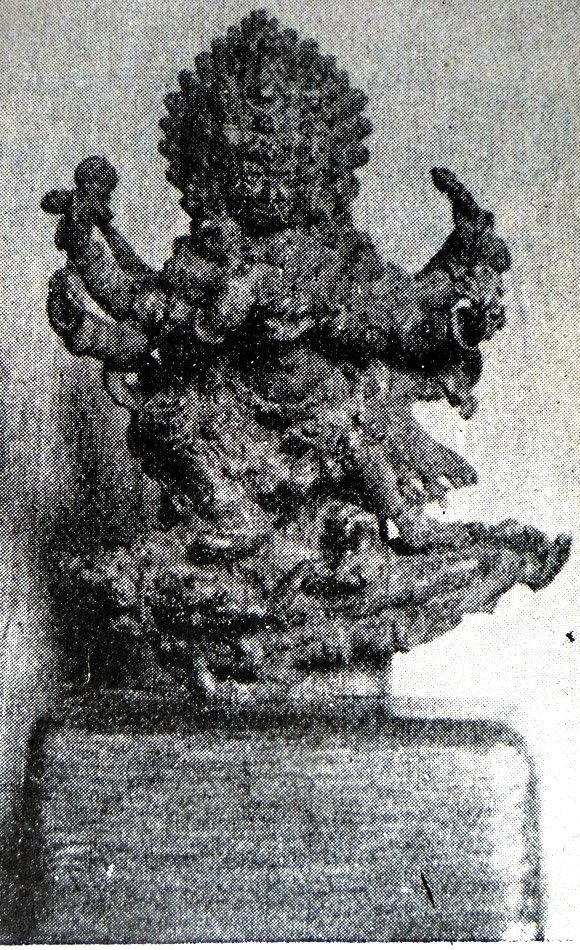The Indian Buddhist Iconography
by Benoytosh Bhattachacharyya | 1958 | 51,392 words | ISBN-10: 8173053138 | ISBN-13: 9788173053139
This page contains an iconography image of Emanations of Akshobhya: Vighnantaka and represents figure 131 of the book Indian Buddhist Iconography, based on extracts of the Sadhanamala English translation. These plates and illustrations represent either photographs of sculptures or line-drawing reproductions of paintings or other representations of Buddhist artwork.
Figure 131 - Emanations of Akṣobhya: Vighnāntaka

Figure 131: Vighnāntaka
(Baroda Museum)
Vighnāntaka is closely associated with three other gods, Padmāntaka, Yamāntaka, and Prajñāntaka, who are generally represented as guardians of the gates in the Maṇḍala. Vighnāntaka is represented in various forms. The name is significant as the word “Vighna” or “obstacle” refers to the Hindu god Gaṇeśa. Only one short Sādhana in the Sādhanamālā describes his form.
This Sādhana is silent about the prostrate figure of Gaṇeśa whom he tramples under his feet, thereby giving significance to his name as already indicated. It may be pointed out here that the god Gaṇeśa, whom the Hindus consider to be the remover of all obstacles, is regarded as the most dangerous obstacle by the Buddhists! As to the origin of this god there runs a Nepalese legend that at a certain time an Oḍiyāna Pandit was performing a Tāntric rite on the bank of the Baghmati river near Kathmandu in order to obtain Siddhi (perfection). Gaṇeśa, it is said, being strongly opposed to the idea, began throwing dangerous obstacles in the way of the due performance of the rite. The Oḍiyāna Pandit finding himself helpless, invoked the god Vighnāntaka, the destroyer of all obstacles, and lo ! Vighnāntaka appeared in a fierce and terrible form, armed with destructive weapons and gave hot chase to Gaṇeśa, who was by this time, flying in terror, and in no time overcame the latter.
In the statuette illustrated in Fig. 131 it may be seen how Vighnāntaka is trampling heavily on Gaṇeśa and the latter, in order keep up the dignity of his godhead, exhibits the Abhaya pose even in his agony! The form in which Vighnāntaka is said to have appeared before the Oḍiyāna Vajrācārya has six arms. He carries in his two principal hands the Kartri and the Kapāla against the chest; the rest carry the Ḍaamru and the goad in the right, and the Triśūla and the noose with the Tarjanī in the left.
The original image is in the Baroda Museum collection. Vighnāntaka is known also to the Chinese collection at Peiping.
Āsana: pratyālīḍha;
Colour: blue;
Symbols: tarjanīpāśa and vajra;
